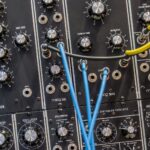Support our educational content for free when you purchase through links on our site. Learn more
The Yazoo Tribe Uncovered: 10 Fascinating Facts You Didn’t Know 🪶
Did you know the Yazoo tribe once controlled a vital stretch of the Mississippi Delta, only to vanish from history after a dramatic revolt against French colonists? Their story is one of mystery, resilience, and cultural richness that few people truly understand. From unique burial rituals involving torchlight ceremonies to a possible indigenous explorer who crossed North America long before Lewis and Clark, the Yazoo tribe’s legacy is as captivating as it is overlooked.
In this deep dive, we unravel the Yazoo tribe’s origins, language, daily life, and their turbulent encounters with European powers. Plus, we’ll explore how their heritage lives on today and why their story still matters. Ready to uncover the secrets of this fascinating tribe? Keep reading for surprising insights and a journey through history that will change the way you think about the Mississippi Delta’s indigenous past.
Key Takeaways
- The Yazoo tribe inhabited the fertile Mississippi Delta and spoke a unique language related to Tunica.
- They played a pivotal role in the 1729 Natchez Revolt, which led to their near destruction.
- Distinctive cultural practices included torchlight burial ceremonies and dualistic spiritual beliefs.
- Survivors were absorbed into neighboring tribes or enslaved, but their legacy endures in archaeology and oral traditions.
- Modern efforts aim to preserve Yazoo heritage and explore their contributions to Native American history.
Curious about the Yazoo tribe’s story and its surprising twists? Let’s dive in!
Table of Contents
- ⚡️ Quick Tips and Facts About the Yazoo Tribe
- 🌿 The Rich History and Origins of the Yazoo Tribe
- 🗺️ Yazoo Tribe Territory: Geography and Environment
- 🗣️ Language and Communication: The Yazoo Dialect and Linguistic Roots
- 🏹 Daily Life and Culture: Traditions, Customs, and Social Structure
- 🍽️ Food and Hunting Practices of the Yazoo Tribe
- ⚔️ Conflicts and Alliances: Yazoo Tribe in Regional Power Dynamics
- 🎭 Spiritual Beliefs and Ceremonies: Yazoo Tribe Religion and Mythology
- 📜 Yazoo Tribe in Colonial Records and Archaeological Discoveries
- 👥 Notable Yazoo Figures and Their Impact on History
- 📚 Yazoo Tribe in Popular Culture and Literature
- 🌟 Preserving Yazoo Heritage: Modern Efforts and Tribal Recognition
- 🛠️ How to Research and Explore Yazoo Tribe History Yourself
- ✅ Conclusion: Why the Yazoo Tribe Still Matters Today
- 🔗 Recommended Links for Further Yazoo Tribe Exploration
- ❓ FAQ: Your Burning Questions About the Yazoo Tribe Answered
- 📖 Reference Links and Sources for Yazoo Tribe Research
⚡️ Quick Tips and Facts About the Yazoo Tribe
Welcome to the fascinating world of the Yazoo tribe, a Native American group whose story is as rich and complex as a layered synth-pop track! If you’re curious about the Yazoo people — their culture, history, and legacy — you’re in the right place. Here’s a quick rundown of key facts to get you started:
- Location: Historically lived along the lower Yazoo River in the Mississippi Delta (modern-day Mississippi).
- Language: Believed to be related to the Tunica language, a language isolate, closely linked with the Tunica, Koroa, and Tioux tribes.
- Historical Timeline: First documented by French explorers in the late 1600s; mission established in 1699; involved in the Natchez Revolt of 1729.
- Alliances & Conflicts: Allied with the Natchez and Koroa in attacks against French colonists; later defeated by French and Choctaw forces.
- Demise: After defeat, survivors were sold into slavery or absorbed into other tribes like the Chickasaw and Choctaw.
- Culture: Known for unique burial customs involving torchlight ceremonies and nightly wailing.
- Notable Figures: Moncacht-Apé, an explorer who may have made the first recorded transcontinental journey across North America.
For a deeper dive into the Yazoo tribe’s story and how it intertwines with the history of the Mississippi Delta, keep reading! And if you’re a fan of synth-pop music, don’t miss our related article on the Yazoo band — a totally different vibe but equally captivating.
🌿 The Rich History and Origins of the Yazoo Tribe
The Yazoo tribe’s history reads like an epic saga, filled with alliances, betrayals, and cultural resilience. Originating in the Mississippi Delta, they were part of the larger Tunica language group, which is fascinatingly considered a language isolate — meaning it stands alone without clear relatives. This linguistic uniqueness adds a mysterious aura to their identity.
Early Encounters and European Contact
French explorers first encountered the Yazoo in the late 17th century. In 1699, Father Antoine Davion established a mission among the Tunica, which also served the Yazoo and allied tribes. However, tensions brewed as English traders from the Province of Carolina began influencing the Yazoo, creating a tug-of-war between French and English colonial powers.
The Natchez Revolt: A Turning Point
The Yazoo’s most dramatic historical moment came during the Natchez Revolt of 1729. Alongside the Koroa and Natchez tribes, the Yazoo attacked French settlements, killing missionaries like Father Jean Rouel and destroying garrisons. This bold resistance, however, provoked a fierce French and Choctaw retaliation that decimated the Yazoo population and ended their existence as a distinct tribe.
Legacy and Disappearance
Post-revolt, survivors were enslaved or absorbed into neighboring tribes such as the Chickasaw and Choctaw. The Yazoo tribe’s story is a poignant reminder of the turbulent colonial era and the resilience of indigenous cultures.
For a vivid narrative of these events, check out the first YouTube video embedded in this article, which beautifully summarizes the Yazoo’s journey.
🗺️ Yazoo Tribe Territory: Geography and Environment
The Yazoo tribe’s homeland was the lush, fertile Mississippi Delta, a region known for its rich alluvial soil and winding waterways. This environment shaped their lifestyle, economy, and interactions with neighboring tribes.
The Yazoo River and Surrounding Lands
The tribe settled along the lower Yazoo River, a tributary of the Mississippi River. This strategic location provided abundant resources:
- Waterways: Vital for fishing, transportation, and trade.
- Forests: Source of game animals and materials for shelter.
- Fertile Soil: Supported agriculture, including maize cultivation.
Environmental Adaptations
The Yazoo built round houses from poles plastered with clay and moss, covered with cypress bark or palmetto leaves — a design perfectly suited to the humid delta climate. Their homes had no windows or chimneys, relying on natural ventilation and fire pits.
Understanding the Yazoo’s environment helps us appreciate how their culture was intricately tied to the land, much like how synth-pop music is inseparable from its electronic soundscape.
🗣️ Language and Communication: The Yazoo Dialect and Linguistic Roots
Language is the heartbeat of any culture, and the Yazoo tribe’s tongue is a fascinating puzzle for linguists. Their language is believed to be related to the Tunica language, which is a language isolate — meaning it has no known relatives.
Linguistic Connections
- Tunica Language Group: The Yazoo, Tunica, Koroa, and Tioux tribes shared linguistic traits, including a distinctive “r” sound.
- Language Isolate: Tunica’s isolation makes it a linguistic gem, offering clues about pre-colonial Native American migrations and interactions.
Communication and Oral Traditions
While written records are scarce, oral traditions likely preserved Yazoo history, myths, and social norms. Unfortunately, much of this was lost due to the tribe’s near extinction after the Natchez Revolt.
For enthusiasts interested in indigenous languages, the Yazoo’s linguistic heritage is a compelling area for further research.
🏹 Daily Life and Culture: Traditions, Customs, and Social Structure
What was life like for the Yazoo tribe before their tragic downfall? Let’s explore their daily rhythms, social fabric, and cultural expressions.
Social Organization
The Yazoo had a structured society, likely with chiefs and clan systems similar to neighboring tribes. Their alliances with the Koroa and Natica suggest a network of kinship and political ties.
Housing and Settlement Patterns
- Round Houses: As mentioned, built from natural materials, designed for communal living.
- Villages: Small, close-knit communities along the riverbanks.
Clothing and Adornments
While detailed records are limited, it’s probable the Yazoo wore clothing made from animal hides and decorated with beads or feathers, reflecting their environment and status.
Burial Customs
One of the most striking cultural aspects was their burial practice:
- Corpses were carried into the woods with relatives holding lighted pine torches.
- Torches were thrown into the grave before covering it.
- Nightly wailing at the burial site continued for months, reflecting deep mourning rituals.
- Chiefs’ graves were marked with carved posts depicting figures painted on their bodies.
These customs reveal a profound spiritual connection to death and the afterlife.
🍽️ Food and Hunting Practices of the Yazoo Tribe
The Yazoo’s diet was a harmonious blend of agriculture, hunting, and fishing — a true farm-to-table lifestyle of the Mississippi Delta.
Agriculture
- Maize (corn): Staple crop, cultivated extensively.
- Beans and Squash: Likely grown alongside maize in the “Three Sisters” agricultural method.
Hunting and Fishing
- Game: Deer, turkey, and small mammals hunted using bows and arrows.
- Fishing: Abundant fish from the Yazoo and Mississippi Rivers supplemented their diet.
Food Preparation
Cooking methods probably included roasting, boiling, and drying meats and fish for preservation.
This balanced diet supported a sustainable lifestyle, much like how a well-crafted synth-pop track balances melody, rhythm, and synth textures.
⚔️ Conflicts and Alliances: Yazoo Tribe in Regional Power Dynamics
The Yazoo tribe’s history is marked by shifting alliances and violent conflicts, especially during European colonization.
Alliances
- Allied with the Koroa and Natchez tribes, sharing cultural and linguistic ties.
- Influenced by English traders from Carolina, which complicated relations with the French.
Conflicts
- In 1702, the Yazoo aided the Koroa in killing French priest Nicholas Foucault and his companions.
- The 1729 Natchez Revolt saw the Yazoo join forces with Natchez warriors to attack French settlements, killing missionaries like Father Jean Rouel.
- French retaliation, aided by the Choctaw, devastated the Yazoo, leading to their near extinction as a tribe.
Enslavement and Displacement
- Survivors were captured and sold into slavery in the Caribbean or absorbed by other tribes.
- The Chickasaw captured many Yazoo men and sold them to Carolina traders.
These turbulent events highlight the Yazoo’s struggle for survival amid colonial pressures.
🎭 Spiritual Beliefs and Ceremonies: Yazoo Tribe Religion and Mythology
The Yazoo tribe’s spiritual life was deeply intertwined with their natural environment and social customs.
Beliefs
- Believed in a dualistic spirit world: a good spirit and a bad spirit.
- Interestingly, they only prayed to the bad spirit, reasoning the good spirit would not harm them.
Ceremonies
- Burial rites were elaborate, involving torchlight ceremonies and prolonged mourning.
- Likely held seasonal and hunting rituals, though detailed records are scarce.
Their spiritual worldview reflects a nuanced understanding of balance and protection, akin to the tension and release found in synth-pop music’s emotional arcs.
📜 Yazoo Tribe in Colonial Records and Archaeological Discoveries
Our knowledge of the Yazoo tribe comes largely from French colonial records, missionary accounts, and archaeological findings.
French Missionary Reports
- Father Antoine Davion’s 1699 mission among the Tunica included the Yazoo.
- Jesuit priest Jean Rouel’s mission in 1722 was violently ended by the Yazoo during the Natchez Revolt.
Archaeological Insights
- Excavations near the Yazoo River have uncovered artifacts like pottery, tools, and burial sites that shed light on their material culture.
- These findings help piece together their lifestyle and social organization.
Historical Documentation
- Sources like the Catholic Encyclopedia and Jesuit Relations provide detailed accounts, though often from a colonial perspective.
- Modern historians cross-reference these with oral histories and archaeology for a fuller picture.
For those eager to explore primary sources, check out EBSCO Research Starters for curated academic materials.
👥 Notable Yazoo Figures and Their Impact on History
Though the Yazoo tribe was small, it produced remarkable individuals who left a mark on history.
Moncacht-Apé: The Explorer
- Possibly the first recorded person to make a round-trip transcontinental journey across North America in the late 1600s or early 1700s.
- His travels predate Lewis and Clark by over a century, offering invaluable insights into indigenous exploration.
Missionaries and Colonial Figures
- Father Antoine Davion and Father Jean Rouel are notable for their interactions with the Yazoo, representing the complex cultural exchanges and conflicts of the era.
These figures embody the Yazoo’s role in the broader narrative of North American history.
📚 Yazoo Tribe in Popular Culture and Literature
The Yazoo tribe’s story has inspired various cultural depictions, though often overshadowed by larger tribes.
Literature
- John Grisham’s short story “Casino” features a businessman gathering people claiming Yazoo ancestry to seek federal recognition for gaming rights — a modern twist on tribal identity and sovereignty.
Media and Education
- Documentaries and YouTube videos (like the featured video) help bring Yazoo history to life for contemporary audiences.
Challenges in Representation
- The Yazoo’s near disappearance means their cultural footprint is faint, but ongoing efforts aim to revive and honor their legacy.
For synth-pop fans curious about namesakes, don’t forget to explore the Yazoo band — a synth duo whose music pulses with 80s nostalgia!
🌟 Preserving Yazoo Heritage: Modern Efforts and Tribal Recognition
Despite their tragic past, the Yazoo tribe’s heritage continues to be preserved and honored.
Tribal Recognition Efforts
- Some descendants seek federal recognition, though challenges remain due to historical displacement and assimilation.
- Efforts include genealogical research and cultural revival programs.
Cultural Preservation
- Museums and historical societies in Mississippi and Louisiana curate Yazoo artifacts and educate the public.
- Academic research continues to uncover and interpret Yazoo history.
Community Engagement
- Collaborations with Choctaw and Chickasaw tribes help keep Yazoo traditions alive through shared ceremonies and storytelling.
These initiatives ensure that the Yazoo tribe’s story is not lost to time.
🛠️ How to Research and Explore Yazoo Tribe History Yourself
Feeling inspired to dig deeper into Yazoo history? Here’s how to start your own exploration:
Step 1: Consult Primary Sources
- French colonial records and missionary accounts are invaluable.
- The Jesuit Relations archives offer detailed narratives.
Step 2: Visit Museums and Historical Sites
- The Mississippi Department of Archives and History hosts Yazoo-related exhibits.
- Archaeological sites near the Yazoo River provide tangible connections.
Step 3: Use Academic Databases
- Platforms like EBSCO provide research starters and scholarly articles.
Step 4: Engage with Tribal Communities
- Reach out to Choctaw and Chickasaw cultural centers for insights and events.
Step 5: Explore Multimedia Resources
- Watch documentaries and YouTube videos (like the featured video) for accessible storytelling.
Researching the Yazoo tribe is like piecing together a synth-pop remix — layering fragments to create a vibrant, new understanding.
👉 CHECK PRICE on:
- Books about Native American Tribes: Amazon | Walmart
- Documentaries on Indigenous History: Amazon | Etsy
Ready to learn more? Keep scrolling for our conclusion and handy links!
✅ Conclusion: Why the Yazoo Tribe Still Matters Today
So, what’s the final take on the Yazoo tribe? Their story is a compelling blend of resilience, tragedy, and cultural richness that echoes through the history of the Mississippi Delta and beyond. Despite their near disappearance as a distinct group after the Natchez Revolt, the Yazoo tribe’s legacy survives in linguistic studies, archaeological finds, and the cultural fabric of descendant communities like the Chickasaw and Choctaw.
Positives:
- The Yazoo tribe’s rich cultural practices, especially their unique burial rituals and spiritual beliefs, offer valuable insights into indigenous worldviews.
- Their role in regional power dynamics during early colonial times highlights the complexity of Native American-European interactions.
- Notable figures like Moncacht-Apé underscore the tribe’s contributions to exploration and indigenous history.
Challenges:
- The Yazoo’s near extinction and assimilation into other tribes mean much of their culture and language has been lost or fragmented.
- Historical records are often from colonial perspectives, requiring careful interpretation to avoid bias.
Our Recommendation:
For history buffs, anthropologists, and anyone intrigued by Native American heritage, the Yazoo tribe’s story is a must-explore chapter. Their narrative enriches our understanding of the Southeast’s indigenous peoples and the colonial era’s turbulent transformations. Plus, their story invites us to reflect on cultural survival and identity in the face of adversity.
Curious to dive deeper? Check out the recommended books and resources below — your journey into Yazoo history awaits!
🔗 Recommended Links for Further Yazoo Tribe Exploration
-
Books on Native American History and the Yazoo Tribe:
-
Documentaries and Educational Media:
-
Academic Research Resources:
❓ FAQ: Your Burning Questions About the Yazoo Tribe Answered
What role did the Yazoo tribe play in early American history?
The Yazoo tribe was a significant indigenous group in the Mississippi Delta region during the late 17th and early 18th centuries. They were part of the Tunica language family and engaged in trade, warfare, and alliances with neighboring tribes and European colonists. Their most notable historical role was participating in the 1729 Natchez Revolt, a major uprising against French colonial forces. This event marked a pivotal moment in colonial-Native American relations and ultimately led to the tribe’s near destruction.
How is the Yazoo tribe connected to the Mississippi region?
The Yazoo tribe inhabited the lower Yazoo River area in the Mississippi Delta, a fertile and strategically important region. Their settlements along the riverbanks allowed them to thrive through fishing, agriculture, and trade. The Yazoo River itself is named after the tribe, cementing their historical connection to the region. Their presence influenced the cultural and political landscape of Mississippi during the colonial period.
What cultural practices were unique to the Yazoo tribe?
One of the most distinctive Yazoo cultural practices was their burial ritual, which involved carrying the deceased into the woods accompanied by relatives holding lighted pine torches. Torches were thrown into the grave before it was covered, and mourners would wail nightly at the burial site for months. They also believed in a dualistic spirit world but uniquely only prayed to the bad spirit, believing the good spirit would not harm them. These customs reflect a rich spiritual life and deep respect for the dead.
Are there any modern descendants of the Yazoo tribe today?
While the Yazoo tribe ceased to exist as a distinct group after the 18th century due to warfare, enslavement, and assimilation, their descendants likely survive within the Chickasaw, Choctaw, and other Native American communities. Some individuals and groups claim Yazoo ancestry and are involved in efforts to preserve and revive Yazoo heritage, though federal recognition remains a challenge.
How did the Yazoo tribe influence local music traditions?
Though there is no direct evidence linking the Yazoo tribe to specific local music traditions, their cultural presence in the Mississippi Delta contributed to the rich tapestry of indigenous influences in the region. The Mississippi Delta is renowned for its musical heritage, especially blues and folk traditions, which often incorporate Native American rhythms and instruments. The Yazoo’s legacy is part of this broader cultural mosaic.
What artifacts have been discovered from the Yazoo tribe?
Archaeological excavations near the Yazoo River have uncovered pottery shards, tools, and burial artifacts that provide insights into Yazoo daily life and spiritual practices. Items such as clay-moss plastered house remains and carved grave markers have helped historians reconstruct aspects of their material culture. These artifacts are crucial for understanding the tribe’s social organization and customs.
What is the historical significance of the Yazoo tribe in Native American studies?
The Yazoo tribe holds a unique place in Native American studies due to their linguistic ties to the Tunica language isolate, their involvement in colonial-era conflicts, and their cultural practices. Their story exemplifies the complex interactions between indigenous peoples and European colonists in the Southeast. Studying the Yazoo helps scholars understand patterns of alliance, resistance, and cultural survival among Native American tribes during a transformative period in American history.
📖 Reference Links and Sources for Yazoo Tribe Research
- Yazoo People – Wikipedia
- Yazoo Indians – The Catholic Encyclopedia
- Yazoo | Research Starters | EBSCO Research
- Mississippi Department of Archives and History
- Jesuit Relations and Allied Documents
For those eager to explore the Yazoo tribe’s fascinating history and cultural legacy, these sources provide authoritative and comprehensive information to guide your journey.










